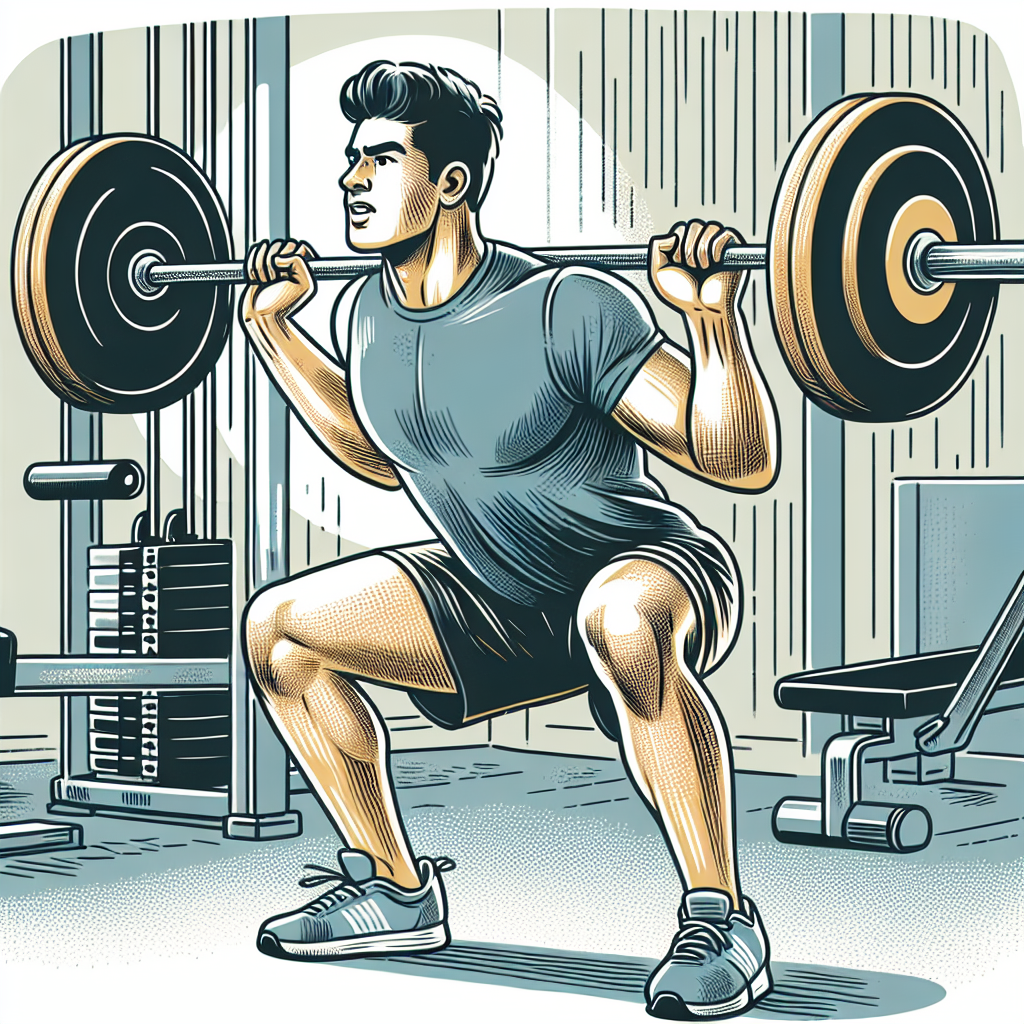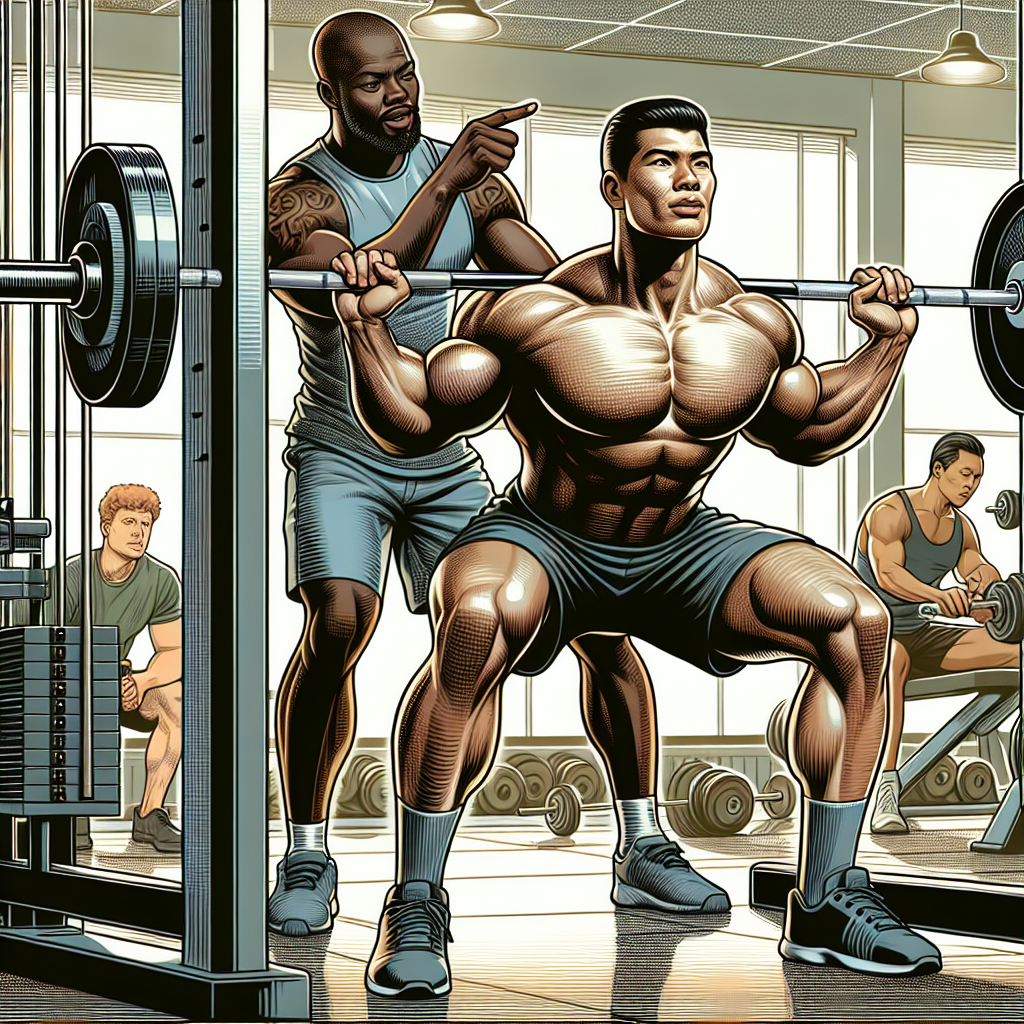Barbell Squat Exercise
Barbell Squat Exercise

Are you ready to take your leg day to the next level and dominate the squat rack? Whether you're a seasoned gym rat or just dipping your toes into strength training, mastering the barbell squat is an absolute must for anyone serious about their fitness journey. This powerful squat exercise isn't just about building quads of steel; it's about unlocking a host of squat benefits that will have you smashing personal records and feeling stronger than ever. We'll guide you through proper squat form, share fitness tips to perfect your technique, and even throw in a cheeky Barbell Jack offer to make loading those plates a breeze. So, grab your lifting belt and let’s get those squat goals on point! #SquatGoals #LegDay #StrengthTraining
Understanding the Barbell Squat
The barbell squat is more than just a leg exercise; it's a staple in strength training that has evolved over time. Understanding its history and variations can enhance your gym workouts and unlock maximum squat benefits. Let's dive into its rich past, types, and clear up some common misconceptions.
History and Evolution
The barbell squat has deep roots in fitness culture. It began as a fundamental movement in weightlifting and has transformed into a key exercise in various training regimens. The squat's evolution reflects changes in fitness trends and techniques.
-
Early Beginnings: The squat was initially a test of lower body strength in early strength competitions.
-
Modern Adaptations: Today, it's a versatile exercise incorporated into routines like powerlifting.
-
Cultural Impact: The squat has become a symbol of strength and resilience, often featured in strength training iconography.
The squat's journey from a simple lift to a complex exercise mirrors the growth of the fitness industry. Its widespread adoption highlights the importance of foundational movements in achieving fitness goals.
Types of Barbell Squats
Different squat variations target specific muscles and offer unique benefits. Understanding these types can help tailor your workouts to fit your goals, whether it's strength, hypertrophy, or endurance.
-
Back Squat: The classic form, focusing on overall leg strength.
-
Front Squat: Shifts focus to quads and core stability.
-
Overhead Squat: Enhances balance and flexibility.
Each squat type has its place in a comprehensive leg day routine. The right choice depends on your fitness level and objectives.
Common Misconceptions
Misunderstandings about squats can lead to improper form or injury. Debunking these myths ensures you reap all squat benefits safely.
-
"Squats are bad for knees": When done correctly, squats can actually strengthen knee joints.
-
"Only for weightlifters": Squats are beneficial for anyone looking to build strength.
-
"Deeper is always better": Depth should be tailored to individual flexibility and goals.
Addressing these misconceptions helps prevent injury and promotes a balanced, effective approach to strength training.

Proper Squat Form Essentials
Achieving proper squat form is crucial to maximize effectiveness and prevent injury. This section covers stance, depth, and breathing techniques to ensure you're squatting like a pro.
Stance and Positioning
Your squat stance can significantly impact your performance and safety. Proper positioning ensures that you're targeting the right muscles and protecting your joints.
-
Feet Placement: Feet should be shoulder-width apart, with toes slightly pointing out.
-
Knee Alignment: Knees should track in line with your toes to avoid strain.
-
Back Position: Maintain a neutral spine to support your lower back.
A consistent stance helps in developing muscle memory, leading to improved squat form over time.
Depth and Range of Motion
Squat depth varies from person to person. It's essential to find a depth that suits your flexibility and goals, ensuring you optimize your range of motion.
-
Parallel Squat: Thighs parallel to the ground, ideal for general strength.
-
Below Parallel: Greater muscle activation but requires more flexibility.
-
Quarter Squat: Focuses on the upper leg, suitable for sport-specific training.
Experiment with different depths to find what works best for your body and fitness objectives.
Breathing Techniques
Breathing might seem trivial, but it plays a crucial role in effective squatting. Proper breathing enhances performance and stability.
-
Inhale Deeply: Before descending, take a deep breath to brace your core.
-
Hold Your Breath: Maintain core tension as you lower.
-
Exhale: Release the breath as you drive upwards, pushing through your heels.
Mastering breathing can significantly improve your squat performance and endurance.
Maximizing Squat Benefits
Unlocking the full potential of squat exercises involves understanding their advantages, leveraging them for leg day gains, and knowing how to prevent injuries. Let's explore how squats can be a game-changer in your strength training routine.
Strength Training Advantages
Squats are a powerhouse of strength training, providing numerous benefits that go beyond muscle building.
-
Whole Body Workout: Squats engage multiple muscle groups, including the core, back, and legs.
-
Functional Strength: Enhances everyday movements, improving overall mobility.
-
Metabolic Boost: Builds muscle mass, increasing your resting metabolic rate.
Incorporating squats into your routine can lead to noticeable improvements in both athletic performance and daily activities.
Boosting Leg Day Gains
Leg day is incomplete without squats, known for their ability to enhance lower body strength and size. Here’s how squats can amplify your leg day gains:
-
Quad and Hamstring Development: Squats target major leg muscles, promoting balanced growth.
-
Glute Activation: Proper form ensures the glutes are effectively engaged.
-
Progressive Overload: Easily increase weight to challenge muscles and stimulate growth.
For those aiming for powerful legs, squats are indispensable. Consistent practice leads to significant gains over time.
Injury Prevention Tips
While squats are beneficial, improper execution can lead to injuries. Here are some injury prevention tips:
-
Warm-Up: Always start with a dynamic warm-up to prepare your muscles.
-
Focus on Form: Prioritize technique over weight.
-
Listen to Your Body: If something feels off, reassess your form or consult a trainer.
Preventing injuries ensures long-term success and enjoyment of your fitness journey.
Integrating Squats Into Your Routine
To fully benefit from squats, they need to be effectively integrated into your routine. This section will guide you on crafting workouts, combining exercises, and tracking progress.
Crafting Effective Gym Workouts
Designing workouts that incorporate squats can optimize your gym sessions. Here’s a quick guide:
-
Plan Your Leg Day: Dedicate specific days to lower body workouts.
-
Prioritize Squats: Start with squats when energy levels are high.
-
Balance with Accessories: Use exercises like lunges and deadlifts for variety.
Creating a balanced workout ensures that you target all muscle groups, leading to comprehensive development.
Combining with Other Exercises
Pairing squats with complementary exercises can enhance overall fitness outcomes. Here’s how:
-
Deadlifts: Targets the posterior chain, balancing squat work.
-
Leg Press: Isolates the quads, offering variety.
-
Core Exercises: Strengthens the midsection, supporting squat form.
Combining exercises ensures a holistic approach to strength training, maximizing both squat benefits and overall fitness.
Progression and Personal Records
Tracking progress is vital for motivation and continuous improvement. Here’s how to set personal records:
-
Start Light: Focus on form before increasing weight.
-
Gradual Increases: Add weight progressively to avoid plateaus.
-
Record Your Lifts: Keep a workout journal for tracking progress.
Consistently pushing personal records fosters growth and keeps workouts challenging.
Squat Gear and Accessories
Using the right gear can enhance your squat performance and safety. This section highlights essential equipment, introduces our Barbell Jack offer, and provides fitness tips for using accessories effectively.
Essential Equipment Recommendations
Proper equipment ensures safe and effective squatting. Key recommendations include:
-
Lifting Shoes: Offers stability and support.
-
Weightlifting Belt: Provides back support during heavy lifts.
-
Knee Sleeves: Protects joints and offers warmth.
Investing in quality gear can make a significant difference in your performance and comfort.
Benefits of Our Barbell Jack Offer
Loading weights can be a hassle, but a Barbell Jack simplifies the process. Here are some benefits:
-
Ease of Use: Quickly elevate barbells to change plates effortlessly.
-
Saves Time: Spend less time setting up, more time lifting.
-
Prevents Injury: Reduces strain from awkward weight lifting.
Our Barbell Jack offer is perfect for those looking to streamline their workout routine.
Fitness Tips for Accessory Usage
Accessories can play a crucial role in optimizing your squat workouts. Here are some tips:
-
Choose Wisely: Select accessories that match your fitness level.
-
Consistency is Key: Regular use leads to better results.
-
Consult a Trainer: If unsure, seek guidance to maximize benefit.
Effective use of accessories can elevate your workouts, providing that extra edge in achieving squat goals.


Leave a comment
Please note, comments must be approved before they are published